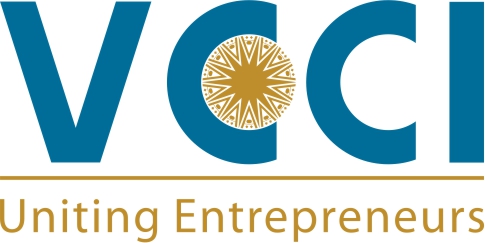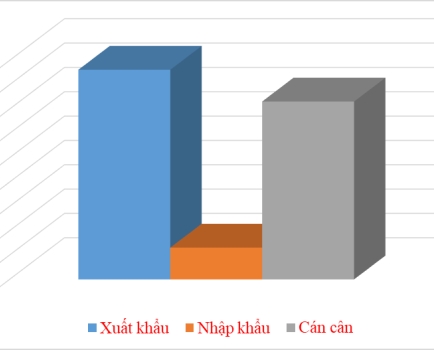Continue to handle cross-ownership in banks
Tue, 05 Nov 2024 14:30:00 | Print | Email Share:
The situation of excess share ownership, cross-ownership between credit institutions (CIs), CIs and enterprises, although has decreased significantly compared to previous periods, is still complicated and requires continued inspection and control.
 |
| Cross-ownership exceeding the prescribed limit and cross-ownership in the credit institution system are gradually being handled. Source: Internet. |
Cross-ownership is gradually being handled
Compared to the previous period, cross-ownership in banks has decreased sharply thanks to the timely intervention of competent authorities and the addition of the legal system. In particular, the Law on Credit Institutions 2024 has added regulations to help strengthen the prevention of cross-investment, cross-ownership and ownership of a manipulative and dominating nature in credit institutions.
One of the most concerned regulations is the reduction of the share ownership ratio for institutional shareholders from 15% to 10% of charter capital, and for shareholders and related persons from 20% to 15% of charter capital. At the same time, credit institutions are required to publicly disclose information on shareholders and related persons with an ownership ratio of 1% or more of charter capital at the credit institution. Therefore, up to now, a series of commercial banks have strictly complied with the announcement of this list.
In the report sent to the National Assembly on the implementation of Resolution No. 62/2022/QH15 on questioning activities at the 3rd session of the 15th National Assembly for the banking sector, the Governor of the State Bank of Vietnam (SBV) affirmed that share ownership exceeding the prescribed limit and cross-ownership in the credit institution system have been gradually handled, and the situation of large shareholders/shareholder groups manipulating and dominating banks has been limited.
The situation of excess share ownership, cross-ownership between credit institutions, credit institutions and enterprises according to the report of credit institutions after processing has decreased significantly compared to previous periods. Shareholders, shareholders and related persons owning shares exceeding the prescribed limit are mainly in corporations and state-owned enterprises.
As for the situation of exceeding the regulations
The report on the percentage of shareholders owning more than 1% of OCB's charter capital shows that 20 shareholders owning 1% or more of the charter capital, not including related persons, own nearly 80% of the bank's capital, including 13 institutional shareholders owning 54.6% of the capital and 7 individual shareholders owning the remaining 24.8%. Chairman of the Board of Directors Trinh Van Tuan and his related parties own more than 19.9% of the capital, Ms. Cao Thi Que Anh (Mr. Tuan's wife, also a member of the Board of Directors of Century Fiber Joint Stock Company) and her related parties own nearly 19.8% of the capital, Mr. Tuan's 3 daughters and their related parties also own more than 19% of the charter capital - all exceeding the provisions of the Law.
At VIB, 2 shareholders and their related parties own more than the ratio according to the new regulations, even Mr. Dang Khac Vy - Chairman of the Board of Directors of VIB and his related parties own more than 20.2% of the charter capital - exceeding both the old and new regulations.
At Techcombank, according to the update in September 2024, Mr. Ho Hung Anh and his related parties own 19.96% of the charter capital; Masan Group Corporation and its related parties own 20.09% of charter capital - an increase from the 15.15% announced in July 2024. In addition, Techcombank also has 4 individual shareholders and related parties owning from 17% to nearly 33% of the bank's charter capital.
Not only the 3 banks mentioned above, the report on the percentage of shareholders owning more than 1% of charter capital of some banks also shows a fairly large ownership ratio of a group of shareholders, enterprises, organizations and related persons, or the ownership ratio exceeds the prescribed limit...
According to the State Bank, handling the issue of ownership exceeding the prescribed limit, cross-ownership is still difficult in cases where major shareholders and related persons of major shareholders intentionally conceal, ask other individuals/organizations to register the number of shares owned to circumvent regulations, leading to the credit institution being controlled by these shareholders, potentially lacking transparency. Some credit institutions have a level of concentration of ownership of shares in a number of shareholders and related persons, although not violating the provisions of the law, but need to pay attention to prevent potential risks that may occur...
On the other hand, current law does not have regulations on the concept of cross-investment. During their operations, credit institutions must comply with the provisions of law (including credit granting, investment, capital contribution, share ownership, etc.). Currently, some credit institutions provide credit (loans, investments, etc.) to shareholders (organizations, individuals) and related persons of shareholders. However, the provisions of law do not prohibit credit institutions from providing credit to shareholders and related persons if they comply with the provisions.
In addition, according to the State Bank, the detection of relationships between enterprises is still limited because information to determine the ownership relationship of enterprises, especially enterprises that are not public companies, is very difficult. The State Bank is not proactive in looking up information as well as determining the accuracy and reliability of information sources.
By: Customs News
Source: https://english.haiquanonline.com.vn/continue-to-handle-cross-ownership-in-banks-32022.html
---------------------------------------------
Same category News :













